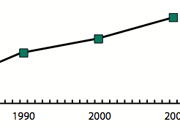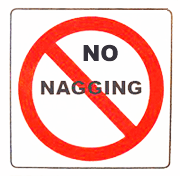
Real-estate mogul Barbara Corcoran describes how she struggled to pay attention in elementary school. She hadn’t learned to read by third grade, and accepted the label of “stupid” that the nuns had assigned to her.
simcha's postings about love, connection, parenting & personal growth
 Parenting with Love and Logic® is a nation-wide program founded by Jim Fay and Foster W. Cline, M.D. to help parents raise happy, responsible children (and to make parenting more enjoyable as a bonus). The following are some of the program’s key concepts, guidelines that can help parents take control of their home life in loving ways.
Parenting with Love and Logic® is a nation-wide program founded by Jim Fay and Foster W. Cline, M.D. to help parents raise happy, responsible children (and to make parenting more enjoyable as a bonus). The following are some of the program’s key concepts, guidelines that can help parents take control of their home life in loving ways.

Adapted from For Women Under 30, Most Births Occur Outside Marriage by J. DeParle and S. Tavernise (New York Times, 2.17.2012)
“It used to be called illegitimacy. Now it is the new normal. After steadily rising for five decades, the share of children born to unmarried women has crossed a threshold: more than half of births to American women under 30 occur outside marriage.”
Adapted from Are You With the Right Mate? by Rebecca Webber (Psychology Today, 1.1.2012)
 Are you with the right mate? Is there some MORE right person waiting for you somewhere? And if you could find that one special person, would you then, finally, find fulfillment and happiness?
Are you with the right mate? Is there some MORE right person waiting for you somewhere? And if you could find that one special person, would you then, finally, find fulfillment and happiness?
Abridged from It’s Still the Age of Anxiety. Or Is It? (2.14.2012) by Daniel Smith.
Ours is an age in which an enormous and growing number of people suffer from anxiety. According to the National Institute of Mental Health, anxiety disorders now affect 18 percent of the adult population of the United States, or about 40 million people. By comparison, mood disorders — depression and bipolar illness, primarily — affect 9.5 percent. That makes anxiety the most common psychiatric complaint by a wide margin, and one for which we are increasingly well-medicated. (The anti-anxiety drug alprazolam — better known by its brand name, Xanax — was the top psychiatric drug on the list, clocking in at 46.3 million prescriptions in 2010.)
Despite the fact that our anxiety is heavily diagnosed and medicated, we are no more anxious than our forebears. We are simply more cognizant, as individuals and a culture, of the mind’s tendency to spin out of control. Fourteenth-century Europe, for example, experienced experienced mass convulsions and psychic torment as a result of the devastating famines, waves of pillaging mercenaries, peasant revolts, religious turmoil and a plague that wiped out as much as half the population in four years.
It’s hard to imagine that we have it even close to as bad as that. Yet there is clearly an aspect of anxiety that is new: self-awareness. While the inhabitants of earlier eras may have been wracked by nerves, none are as aware of, nor as fixated, on the condition as we are todayn. Indeed, none of our ancestors even considered anxiety a condition.
Anxiety did not emerge as a cohesive psychiatric concept until the early 20th century, when Freud highlighted it as “the nodal point at which the most various and important questions converge, a riddle whose solution would be bound to throw a flood of light upon our whole mental existence.” The number of thinkers and artists who sought to solve this riddle increased thereafter exponentially. By 1977, the psychoanalyst Rollo May was noting an explosion in papers, books and studies on the subject. “Anxiety,” he wrote, “has certainly come out of the dimness of the professional office into the bright light of the marketplace.”
* * *
Daniel Smith is the author of the forthcoming book Monkey Mind: A Memoir of Anxiety (Simon & Schuster, July 2012). His work has appeared in The Atlantic, Granta, n+1, New York, and The New York Times Magazine.
 Although we cannot always anticipate or avoid situations that we know have the power to undermine relationships (such as chronic exposure to non-marital stress — medical, financial, and so forth), much can be noticed and considered when we set out to make our choice to commit for the long haul. We know, for example, that couples who share core values and goals have a greater chance for a happy long-term relationship.
Although we cannot always anticipate or avoid situations that we know have the power to undermine relationships (such as chronic exposure to non-marital stress — medical, financial, and so forth), much can be noticed and considered when we set out to make our choice to commit for the long haul. We know, for example, that couples who share core values and goals have a greater chance for a happy long-term relationship.
 Based on Elizabeth Bernstein’s Wall Street Journal article, Nagging: Meet the Marriage Killer
Based on Elizabeth Bernstein’s Wall Street Journal article, Nagging: Meet the Marriage Killer
Once again – there is good and bad news. Starting with the latter….
Nagging — the interaction in which one person repeatedly makes a request, the other person repeatedly ignores it, and both become increasingly annoyed — is a toxic communication issue that is one of the leading causes for discord and divorce. We nag when we feel we can’t get what we want from our partner, and we keep on asking in the hopes it will happen. A vicious cycle is set in place: The irritated recipient of the nagging, feeling scolded like a little boy, withdraws in protest, inviting the nagger to nag some more.
 In a recent Science Times article in the New York Times, Richard A. Friedman, professor of clinical psychiatry at Weill Cornell Medical College, explores a growing trend in academic circles to view depression as a “natural” condition that, like ordinary sadness, may provide evolutionary advantages. Separate studies by psychologists Paul W. Andrews (U. of Virginia) and Joseph P. Forgas (U. of New S. Wales) suggested that something about sadness might improve analytical reasoning and the capacity for critical, accurate detection of deceptive communication.
In a recent Science Times article in the New York Times, Richard A. Friedman, professor of clinical psychiatry at Weill Cornell Medical College, explores a growing trend in academic circles to view depression as a “natural” condition that, like ordinary sadness, may provide evolutionary advantages. Separate studies by psychologists Paul W. Andrews (U. of Virginia) and Joseph P. Forgas (U. of New S. Wales) suggested that something about sadness might improve analytical reasoning and the capacity for critical, accurate detection of deceptive communication.